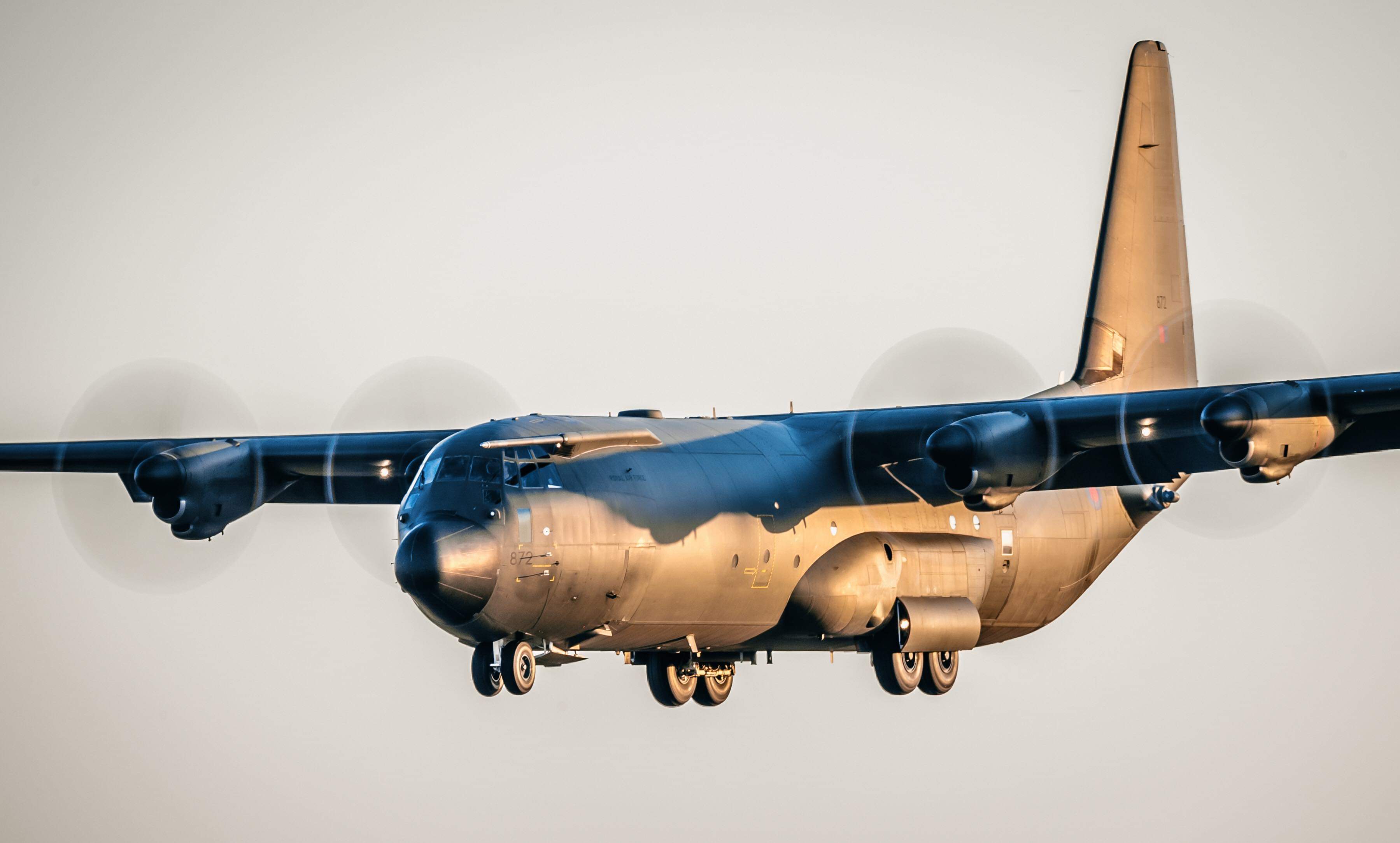Several countries have deployed their military planes to evacuate their citizens as well as Afghan nationals from the war-torn country. While the US-made C-17 Globemaster played a stellar role in these missions, another transport aircraft pulled off a daring mission recently.
The Lockheed Martin C-130 Hercules was involved in many of these rescue missions when the Afghan crisis broke out. Designed originally for transporting troops and equipment to war zones, the plane has been used for civilian and military applications around the globe.
The versatility, fuel efficiency, and advanced technology of the “Herc” have made it an ideal choice in such critical situations.
Among the sorties completed by the C-130, the most notable was the rescue of 20 elite Special Air Service (SAS) personnel of the UK who were left stranded in the province of Kandahar, hundreds of miles from friendly forces when the Taliban took over.
As reported by Daily Mail, it was a very confidential mission. “Kandahar had fallen to the Taliban, and the soldiers were left stranded for five days. We received reports that the Taliban were rampant and killing a lot of Afghan Special Forces, allies of SAS. So the mission was executed on priority, expecting danger to the lives of our soldiers,” a top official told the British daily.

The precarious circumstances in Afghanistan made this mission highly risky, but it was put together by the Joint Special Forces Aviation Wing, all dependent on the C-130J and its crew. If not, 20 of Britain’s most highly trained special forces would be dead within a week.
The Royal Air Force (RAF) regards the C-130J as “highly flexible.” It can airdrop both stores and paratroopers while landing and taking off from natural surfaces, such as a desert strip. Hercules crews are highly skilled in low-level flying and trained to perform both day and night.
During the rescue mission, the Hercules came down on the desert wasteland at the covert rendezvous point, scooped up the SAS troops, and flew back safely in minutes.
“Credit to the Hercules crew from 47 Squadron for landing the aircraft at night on rough terrain and getting her airborne again with the guys and their equipment aboard. It was a textbook. The dramatic desert operation was a success,” the official told Daily Mail.
Taiwan Makes ‘Last-Minute Change’ To Defense Budget; Adds US’ ‘Most Advanced’ Helicopter To Hunt Down Chinese Submarines
The RAF ‘Hercules’
According to the military website Elite UK Forces, the RAF Hercules is fitted with a suite of sensor systems as part of an Enhanced Vision System upgrade.
It features a SIGMA Thermal Imaging system in a Titan 385 turret under the aircraft’s nose and a Low-Light Level Television (LLLTV) camera in a fixed array above the nose. These sensor packages allow it to operate more effectively at night and in poor weather conditions.
Lockheed named the aircraft “Hercules” after the mythological hero known for his strength and courage. Lockheed says the C-130 has flown at least 100 different missions in its 63-year-old life.
The successful use of aircraft to transport people and cargo was an important achievement in World War II and in the Korean War. During the Vietnam War, the US Air Force’s role in hauling millions of tons of personnel, equipment, and supplies reinforced the necessity of air transport in wartime.
Flying alongside the Hercules, C-123s proved valuable during the Vietnam War (1962-1970) because of their ability to land on short, rough fields. In 1967, the US Army-operated twin-engine C-7 Caribou fleet was transferred to the US Air Force and assigned to the 483rd Tactical Airlift Wing at Cam Ranh Bay.
Its small payload capacity was offset by its value as an aircraft capable of airdrop operations in confined areas.
However, another plane from the same family and senior to the C-130 is also making headlines for its exceptional performance during the latest humanitarian crisis in Afghanistan.
The C-17 Globemaster III is 174 long, 55 feet, and one inch tall with a wingspan of 169 feet 10 inches. The C-130E, C-130H, and C-130J, three main variants of the six-decade-old aircraft are currently active.
The purpose of these two aircraft is clear: carry heavy stuff. The Globemaster III is capable of carrying an M1 Abrams Battle Tank, alongside other tactical vehicles and troops. The maximum payload capacity of the C-17 is 172,000 pounds and its maximum gross takeoff weight is 585,000 pounds.
The C-130, which pushed the boundaries of massive aircraft in the 1950s, isn’t able to hold as much. Each version of the C-130 has a maximum allowable payload capacity of right around 43,000 pounds. Its maximum takeoff weight is 155,000 pounds for the C-130E/H and 164,000 pounds for the C-130J.
- The Author is a defense and aerospace enthusiast who was associated with leading Indian media organizations such as CNN-News18, The Statesman, Republic TV, NEWSX / The Sunday Guardian in the past. He is a contributor to the Indian Aerospace and Defence (IA&D) magazine.
- Follow EurAsian Times on Google News